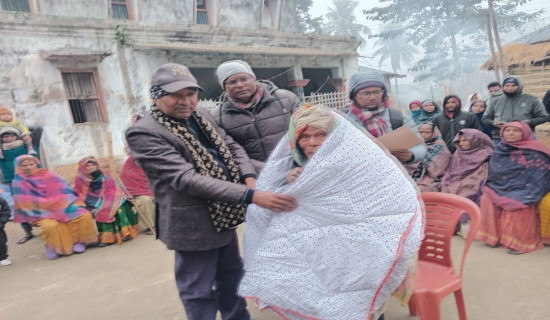- Wednesday, 7 January 2026
Manage Kathmandu’s Public Infrastructure
Writika Rijal
Kathmandu is a vibrant and bustling city. Being home to more than 1.5 million people, the capital city of Nepal is rich in cultural heritages that have contributed to thriving tourism. However, the city is plagued by several challenges facing both locals and visitors. Despite efforts being made by the local government to deal with public concerns, many things still seem to have remained unmanaged in the city.
The streets of Kathmandu always look busy, with people going about their daily lives. However, like many other areas of Kathmandu, New Road and its adjacent places are also found going through various problems related to traffic congestion and sanitation. Because of these issues, it has become difficult for residents and visitors to navigate the city. These problems also cause health safety risks to people.
One of the most visible signs of mismanagement in Kathmandu is the presence of jumbled wires. Such cables can be seen dangling precariously from poles, snaking along the streets, and cluttering the view from windows. Moreover, the dangling wires may cause electrical shocks or even fires, especially during heavy rainfall or windy situations. Despite risks associated with unmanaged wires, little progress seems to have been made when it comes to addressing the issue.
In the past, heaps of garbage could be seen almost everywhere in the city. Commuters as well as vehicles had to face inconveniences due to that. The piles of garbage also used to obstruct the sidewalks and force people to walk on the roads, putting them at risk of accidents and injuries. A foul odour emanating from unmanaged waste was a constant source of discomfort and could lead to respiratory and other health issues. However, this problem has now been addressed, to a great extent, thanks to the initiative taken by the Kathmandu Metropolitan City (KMC) to collect waste regularly.
However, the unmanaged public transportation system still exists in Kathmandu. This presents a challenge of overcrowding, where buses and taxis are frequently overloaded with passengers, leading to uneasiness and even danger, especially in busy areas.
During heavy rainfalls, some parts of Kathmandu often experience waterlogging on its roads, and this poses a variety of problems for locals. Stagnant water can become a breeding ground for mosquitoes, which can spread diseases like dengue and malaria. Additionally, waterlogged roads can damage the road surface, creating safety hazards that can make driving dangerous and lead to costly vehicle repairs.
The densely populated city also faces a shortage of parks and open spaces, leaving its residents with limited opportunities to unwind and connect with nature. This lack of access to the natural environment can have a detrimental effect on the health of people.
Additionally, enough public toilets are not available in the city. And the existing ones are often in poor condition. As available public toilets hardly have soap and clean water, or toilet paper, people find it uneasy while using such facilities. This is a serious issue that needs to be addressed promptly.
In view of such problems and challenges, the government and local authorities seem to be working hard to address them. There are many initiatives underway to improve the city's infrastructure and overall management. Hopefully, Kathmandu will be a livable, prosperous and sustainable city with much-needed interventions from the authorities concerned. The citizens should also contribute to keeping the city neat and clean.

















